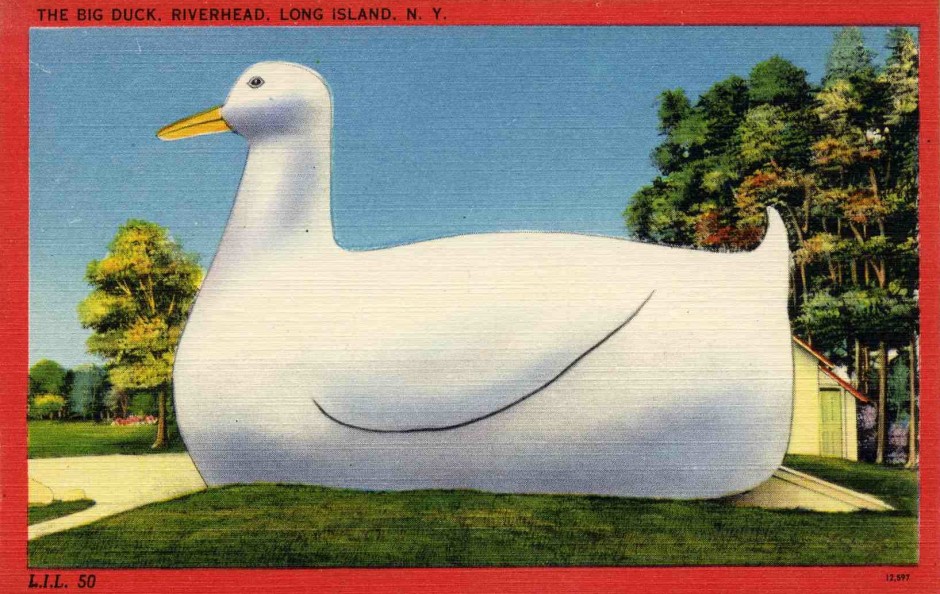
What, the Duck? A Survey of Architecture’s Most Endearingly Quacky Genre
Coined by postmodernists Robert Venturi and Denise Scott Brown in homage to a Long Island landmark, “Duck” architecture describes the mimetic novelty buildings that helped define the American roadside.
We all know them, and almost everywhere has their specimen—fueling giggles and a shared sense of local pride as they bring smiles to our everyday routines. Part-sculpture and part-structure, these kitschy creations stand to honor a societal live-who-you-are moment, emerging as a staunchly provincial counterpoint to the disciplined restraint and institutionalized minimalism of 20th century architecture.
Some are whimsically evocative of the product or service found within. Others were built straight from spontaneous vision—existing simply because, why not?
No matter their purpose, our enduring “Ducks” bring smiles, inspire endless Instagram posts, and help define a true sense of place. Here are some classic examples from Corcoran markets across the country.
Big Duck — The Hamptons

Jon Bilous/Shutterstock.com
Perhaps it was the Brown Derby, the hat-shaped Hollywood haunt opened by Wilson Mizner (Addison’s brother), that inspired Martin Maurer, a Long Island duck farmer to create one of the East End’s most iconic landmarks. After returning from a trip west in 1930, he hired Broadway set designers to fashion him a head-turning roadside stand in the shape of—you guessed it—a big duck, fitted with Model T headlights for eyes that glowed eerily into the night. After a few years in Riverhead, the concrete canard found a permanent home on Maurer’s duck farm in neighboring Flanders, where spare a 20-year sojourn at Hampton Bays’ Sears Bellows Park it has remained ever since. Today, the county-owned monument is an unofficial Twin Forks welcome center, complete with a gift shop and a voice track by Christie Brinkley.
Lucy the Elephant — Jersey Shore
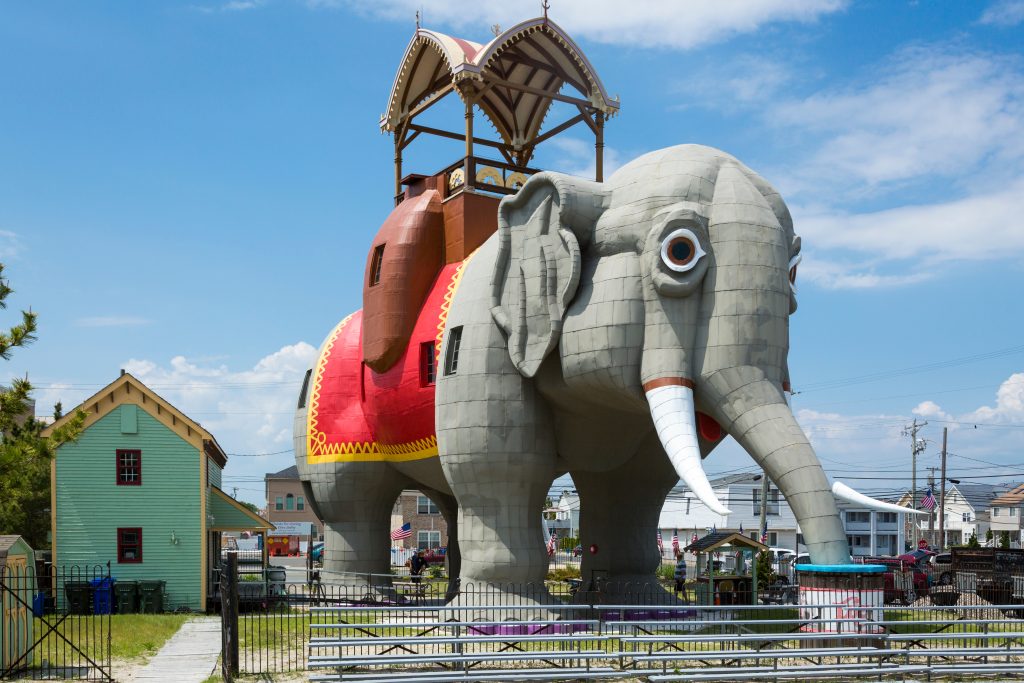
Danita Delimont/Shutterstock.com
The grand dame of Duck is another beast entirely. Originally called “Elephant Bazaar,” Lucy has graced Margate City since 1881—and her builder, developer James V. Lafferty, held a patent on her design. Two reputable Philadelphia architects drew up the plans for this 65-foot-tall Jumbo, which called for 200 kegs of nails, 12,000 square feet of tin cladding, and nearly a million wood components to complete. And while function hardly seems prerequisite, Lucy fulfilled a very specific purpose: Her high-riding howdah, similar to Austin Corbin’s turret on the Shinnecock Hills train station, gave prospective buyers the perfect view over the prime beachfront lots Lafferty was selling. Aside from being the 12th-tallest statue in the United States, she’s also quite possibly the first and only National Historic Landmark to hit Airbnb.
Longaberger’s Giant Basket — Greater Columbus
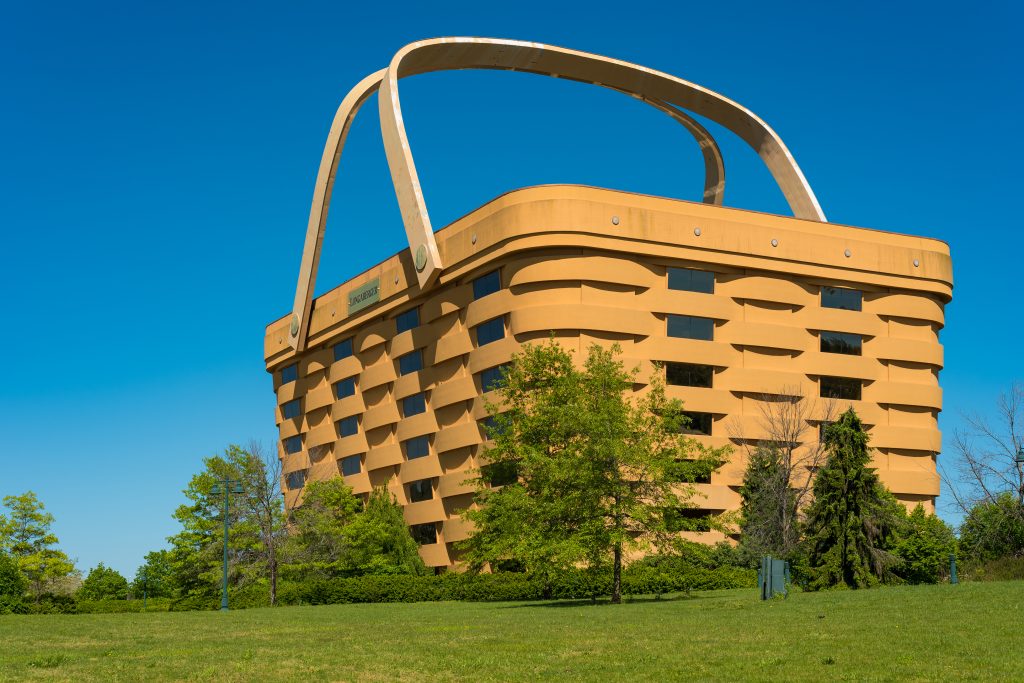
Kenneth Sponsler/Shutterstock.com
The notion of housing a basket maker’s corporate headquarters inside the world’s largest basket might seem like some kind of boardroom dad joke, but for Dave Longaberger, the idea was every bit serious. In 1997, the Longaberger Company moved into its new headquarters: a giant, seven-story picnic packer in Newark, Ohio, complete with a pair of 150-ton handles. While its notoriety was near instantaneous, the $30 million building was a bit of a basket case: it was vacated by 2016 as its parent fell on hard times and, two years later, folded entirely. Plans to convert the Columbus-area landmark into a hotel went on ice during the pandemic, and the structure hit the market for $6.5 million last January.
The Donut Hole — Southern California
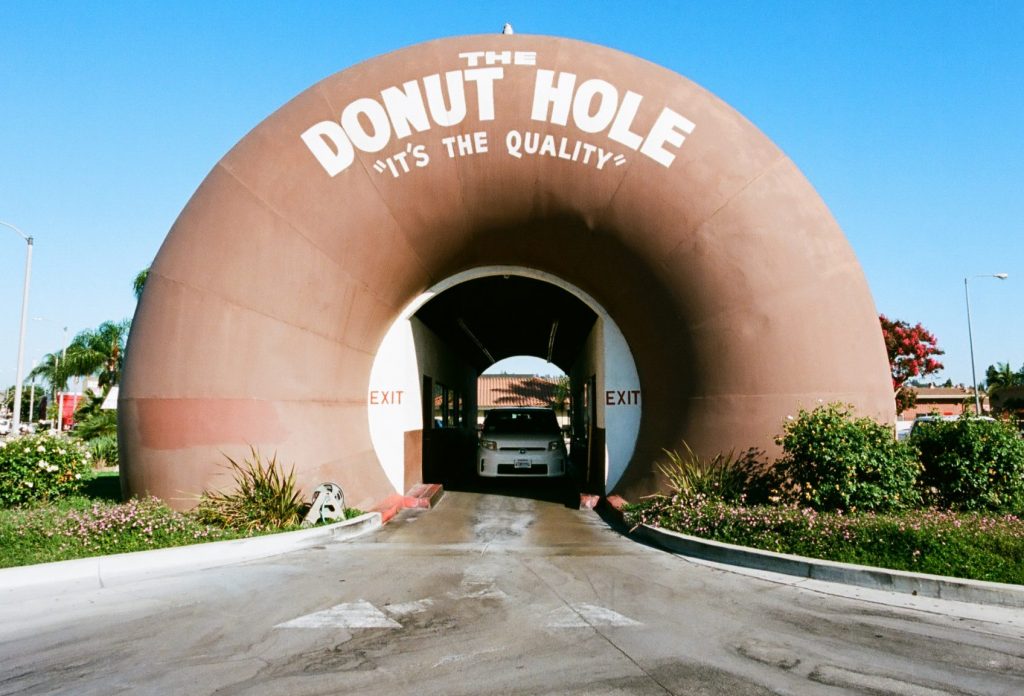
Logan Bush/Shutterstock.com
While certainly not the only Los Angeles-area edifice graced by an oversized doughnut (we see you, Randy’s), this San Gabriel Valley landmark simply glazes over the rest. The Donut Hole in La Puente is the second and last-standing vestige of a long-defunct local chain, though the building itself may predate them all. In 1968, someone brilliant decided to take the purportedly pre-existing building, add a drive through, and flank it at both ends with giant fiberglass dough rings, baking a true roadside icon that’s been immortalized in film, television, and local lore alike. Once inside, you roll right through the kitchen, with a window to snag your chosen morsels without ever leaving your car. Even better, the doughnuts—and the variety thereof—won’t disappoint.
Little Man Ice Cream — Denver Metro
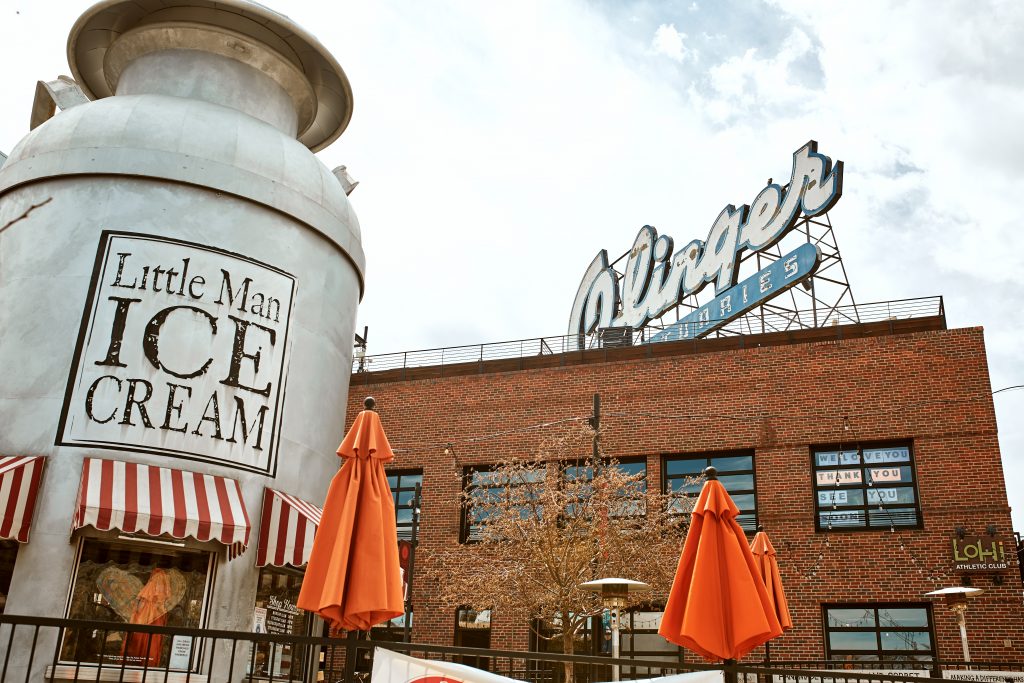
jenlo8/Shutterstock.com
Honey, who blew up the milkman? Despite what you might think, Wayne Szalinski didn’t misfire his growth ray on Denver’s Lower Highland (LoHi) neighborhood, where you’ll find one of the Mile-High City’s consummate creameries housed inside a giant dairy can. This beloved establishment, which opened in 2008 and can draw lines that wrap for blocks around the oversized tin vessel, is a modern ode to “Ducks” themselves: its owners sought to refuel the nostalgia of those iconic roadside buildings that defined the Great American road trip. By their own words, “How better to enjoy a scoop of ice cream than out of a 28-foot cream can?” If it wasn’t purely ornamental, the capacious treat keg could hold a whopping 14,000 pounds worth of vegan chocolate-salted Oreo.


